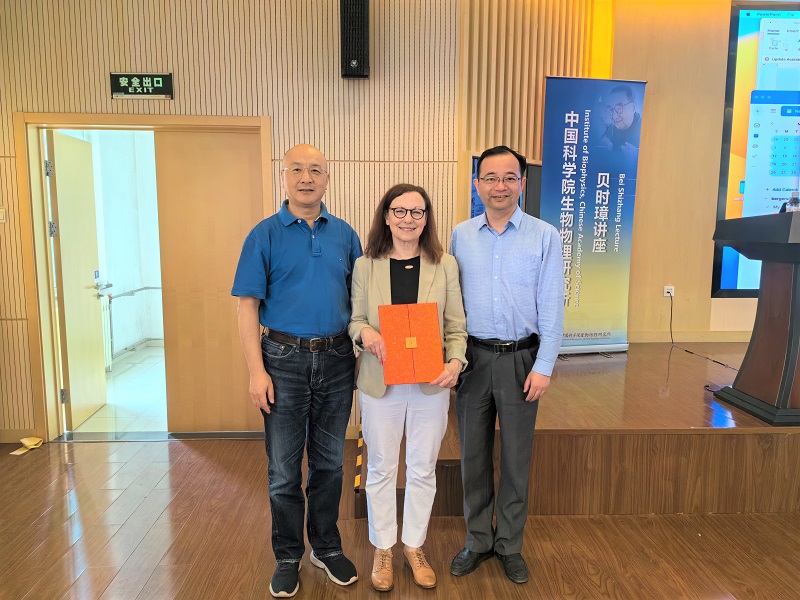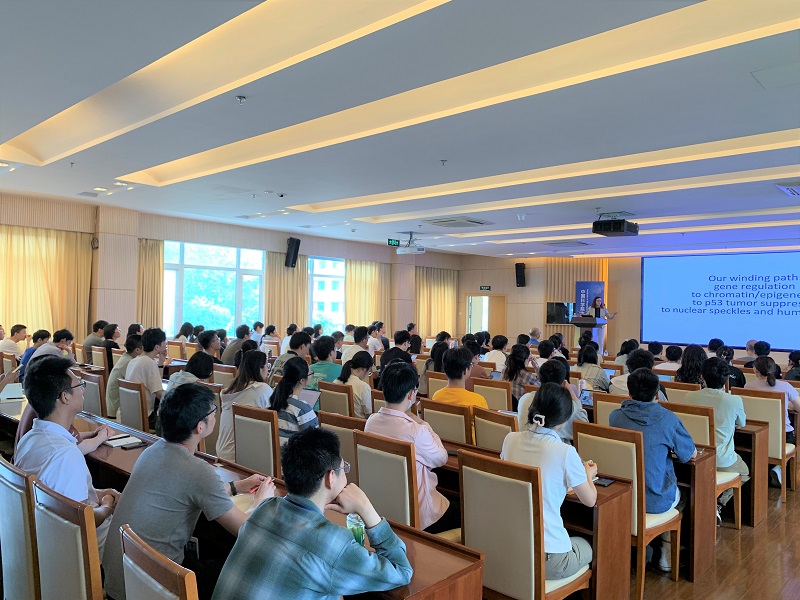Professor Shelley Berger visited the Institute of Biophysics (IBP) and gave a Bei Shizhang Lecture
Professor Shelley Berger, member of the National Academy of Sciences and professor of the University of Pennsylvania, was invited by IBP to give a seminar entitled Epigenetic pathways as targets in human disease on May 10, 2024. The seminar attracted a large number of researchers and students.
Prof. Berger is a well-known scientist whose interest mainly focused on chromatin and epigenetics, especially for post-transcriptional modification of histone tails and transcription factors. In recent years, Berger's lab has focused on mammalian biology and age-related disease (Alzheimer's disease), epigenetic regulation of mammalian learning and memory, and complex social behavior in ant model systems. The lab has published over 250 papers, these include top journals such as Nature, Science, Cell, Nature Genetics, Nature Neuroscience, Nature Cell Biology, Molecular Cell, Developmental Cell, etc. Prof. Berger was elected a member of the National Academy of Medicine in 2012, a member of the National Academy of Arts and Sciences in 2013 and a member of the National Academy of Sciences in 2018.
In this report, Prof. Berger introduced a series of works about transcriptional regulation of genes by nuclear speckles. The Berger's lab discovered that the p53 protein can recruit nuclear speckles to target genes through its PRD domain, leading to transcriptional upregulation, and demonstrated that recruitment of nuclear speckles by p53 does not depend on its transcription activation domain. She also showed that knocking down CTCF and RAD21 disrupts the interaction between nuclear speckles and chromatin, while knocking down WAPL enhances the interaction, indicating that chromatin's three-dimensional structure plays an important role in nuclear speckles and chromatin interaction. Through bioinformatics analysis, the Berger's lab also found that the expression profile of nuclear speckle-related proteins can predict the patient outcomes of clear cell renal cell carcinoma (ccRCC) very well, with patients exhibiting speckle signature I having a worse patient outcomes, while those with speckle signature II having a better outcomes. Further studies revealed that the highly expressed transcription factor HIF2A in ccRCC has a speckle targeting domain (STM) similar to the p53 protein's PRD domain, which can recruit nuclear speckles to activate gene expression. Genes specifically activated by HIF2A's STM are also relatively highly expressed in ccRCC with signature I. The above research elucidates the regulatory role of nuclear speckles in activating gene expression and suggests that nuclear speckles may serve as an important target for disease treatment.
After the report, Professor Shelley Berger had a lively discussion with the audience and answered various questions. The lecture ends with a sound of applause.

Professor Shelley Berger was giving the lecture

Professor Ruiming Xu hosted the lecture

Prof. Ruiming Xu, Prof. Shelley Berger and Prof. Bing Zhu

The audience

